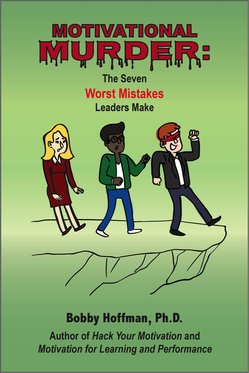0 Comments
By Dr. Bobby Hoffman
Companies often devote massive resources toward employee education under the assumption that enhancing employee skill sets is beneficial for both the individual and the organization. The corporate investment in employee development is based on the company’s expectation of enhanced skill sets, increased productivity, and a positive relationship between training hours and profitability. However, training employees comes with a price. One intangible cost is worker negativity and lack of enthusiasm toward training participation. Post-training repercussions include complaints about time away from work and the perception that little personal gain resulted from the developmental experience. Here are four research-supported strategies that enhance training motivation: |
Authors
Richard Feenstra is an educational psychologist, with a focus on judgment and decision making.
(read more) 
Bobby Hoffman is the author of "Hack Your Motivation" and a professor of educational psychology at the University of Central Florida.
(read more) Archives
April 2023
Categories |

 RSS Feed
RSS Feed
